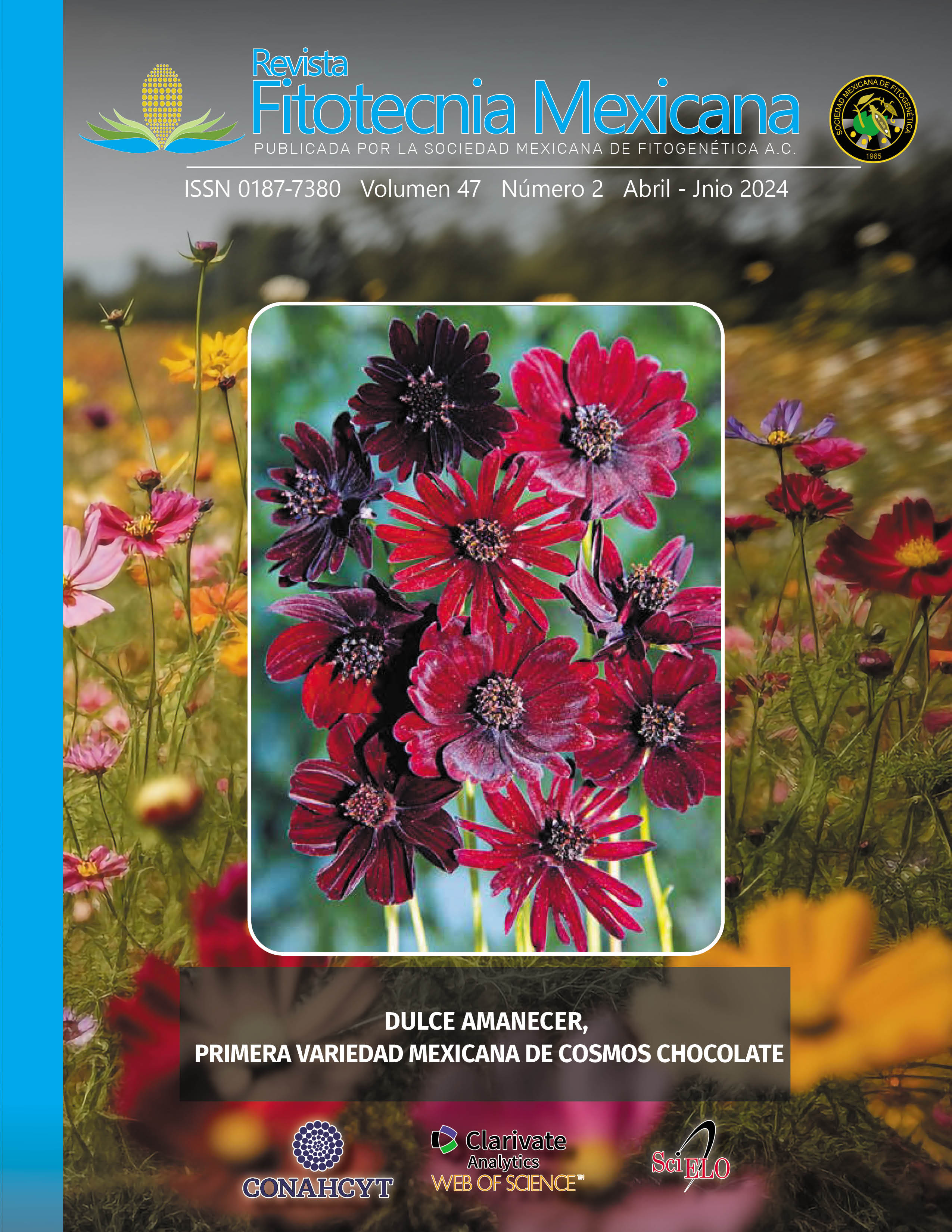CONTRIBUTION OF NITROGEN BY THE SOIL AND EFFICIENCY OF USE OF NITROGEN APPLIED IN RAINFED MAIZE
Main Article Content
Abstract
Variations in the efficiency of use of nitrogen fertilizer in maize and the loss of nitrogen (N) to the environment are of great relevance in agricultural production. The objective of this research was to estimate the contribution of N by the soil and the efficiency of recovery of N applied in rainfed maize in soils with different organic matter content. Two experiments were carried out in Tetla de la Solidaridad, Tlaxcala (sites T1 and T2) and one in Montecillo, State of Mexico (site M). Treatments were: 0, 90 and 120 kg N ha-1 at site T1 and 0, 70 and 100 kg N ha-1 at sites T2 and M. The experimental design was randomized complete blocks with four replications in Tetla and three replications in Montecillo. Data analysis was by regression. The organic matter content of the soil was 1.1, 1.2 and 3.3 %, and NO3-N at sowing was 36, 31 and 72 mg kg-1 at sites T1, T2 and M, respectively. The contribution of N by sandy loam soil was 117 kg N ha-1 at site T1, 67 kg N ha-1 at site T2 and 80 kg N ha-1 at site M of clay loam soil. Efficiencies of use of the applied N were 32 to 37 % at site T1, 4 to 7 % at site T2 and 0 % at site M. The reason of these low efficiencies was associated with high concentration of NO3-N at the three sites, low yields due to late planting date at sites T2 and M, low precipitation at site T2, micronutrient deficiency and grub worm (Phyllophaga spp.) infestation at site M.

